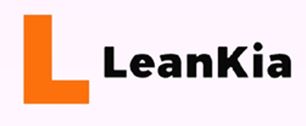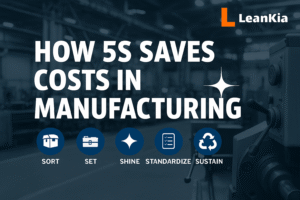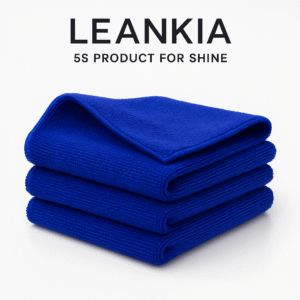Introduction
In today’s competitive manufacturing landscape, cost-saving initiatives are critical for survival and growth. Among lean methodologies, 5S (Sort, Set in Order, Shine, Standardize, Sustain) stands out as a simple yet powerful tool that not only improves workplace organization but also drives significant cost reduction. By minimizing waste, enhancing productivity, and preventing costly errors, 5S has become a global best practice for manufacturers.
How 5S Helps in Cost Savings
- Reduction of Wastage (Muda)
- Sort eliminates unnecessary items, freeing up floor space and reducing storage costs.
- Example: A Japanese automotive parts manufacturer reported saving $1.2 million annually by reducing inventory clutter and reusing floor space for production expansion.
- Improved Productivity
- Set in Order ensures tools and materials are always within easy reach, reducing wasted time searching.
- Case: In a U.S.-based electronics plant, tool retrieval time was reduced by 40%, translating into thousands of productive hours annually.
- Maintenance Cost Reduction
- Shine focuses on regular cleaning and inspection, identifying wear and tear before breakdowns occur.
- Example: An Indian textile manufacturer reduced unplanned downtime by 30% through 5S Shine audits, saving significant repair costs.
- Error Prevention and Safety Compliance
- Standardize creates uniform procedures, reducing operator errors and safety incidents.
- Research by the Occupational Safety and Health Administration (OSHA) notes that organized workplaces see up to 25% fewer accidents, directly lowering costs of compliance, compensation, and insurance.
- Sustained Efficiency
- Sustain ensures that improvements stick, reducing costs associated with recurring inefficiencies.
- Case: A European pharmaceutical company documented a 15% cost reduction in quality rejections over 3 years due to sustained 5S practices.
Legal and Regulatory Impact
- OSHA (USA), HSE (UK), and Factories Act (India) mandate safe, organized workplaces. By reducing clutter and hazards, 5S helps meet these requirements, avoiding fines and legal liabilities.
- Environmental standards like ISO 14001 emphasize waste reduction and efficiency. 5S directly contributes to compliance, reducing audit-related costs.
Global Research Insights
- A study published in the International Journal of Lean Six Sigma found that 5S adoption reduced manufacturing costs by 10-30% across multiple industries.
- Research from Kaizen Institute highlights that companies integrating 5S into their lean journey experience a payback period of less than one year.
Conclusion
5S is not merely about tidiness – it is a strategic cost-saving tool. From reducing downtime and inventory waste to ensuring legal compliance and workplace safety, 5S creates measurable financial benefits. Manufacturing industries that embed 5S into their culture unlock cost efficiency, productivity, and long-term sustainability.
Key Takeaway: Investing in 5S is not an expense, but a profit-generating opportunity for manufacturers worldwide.

















